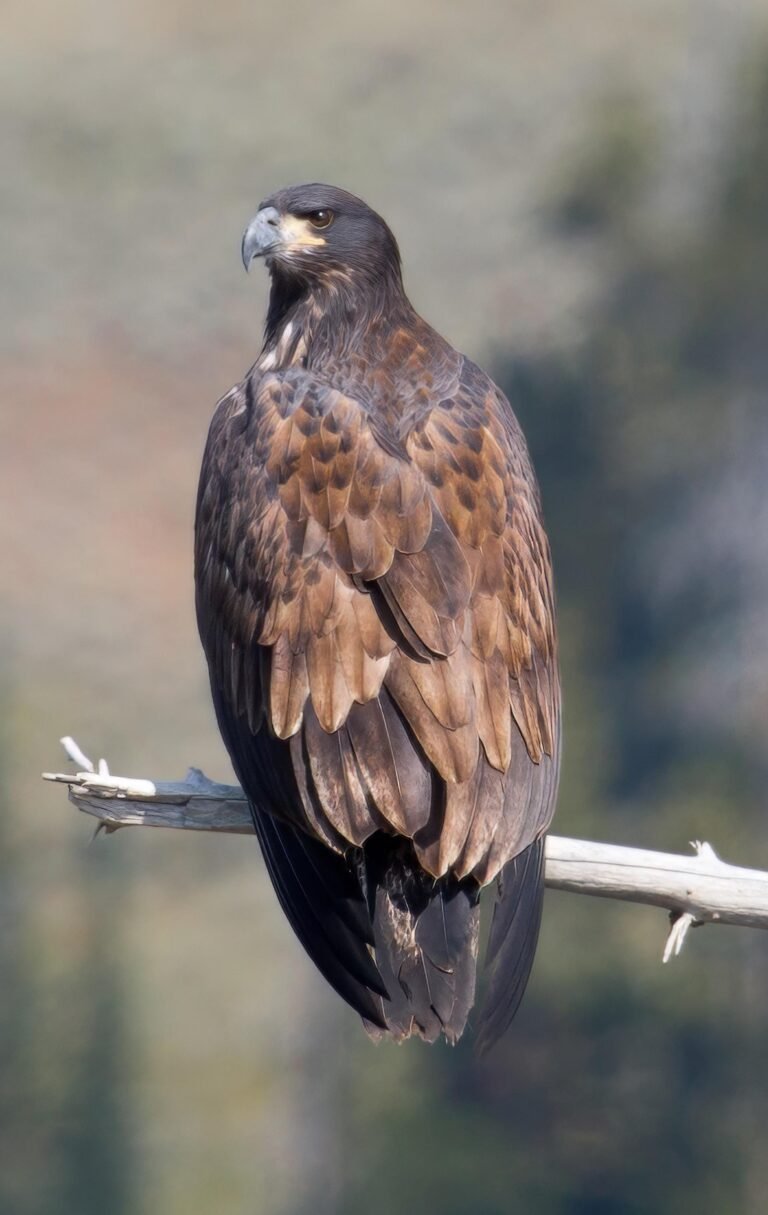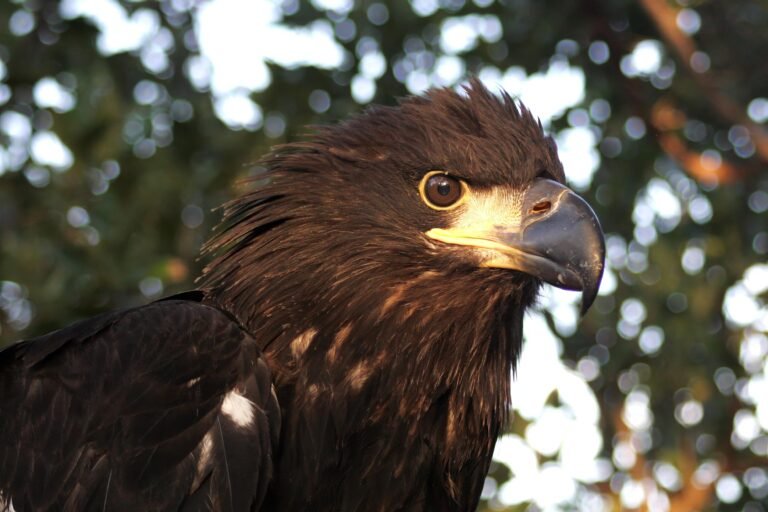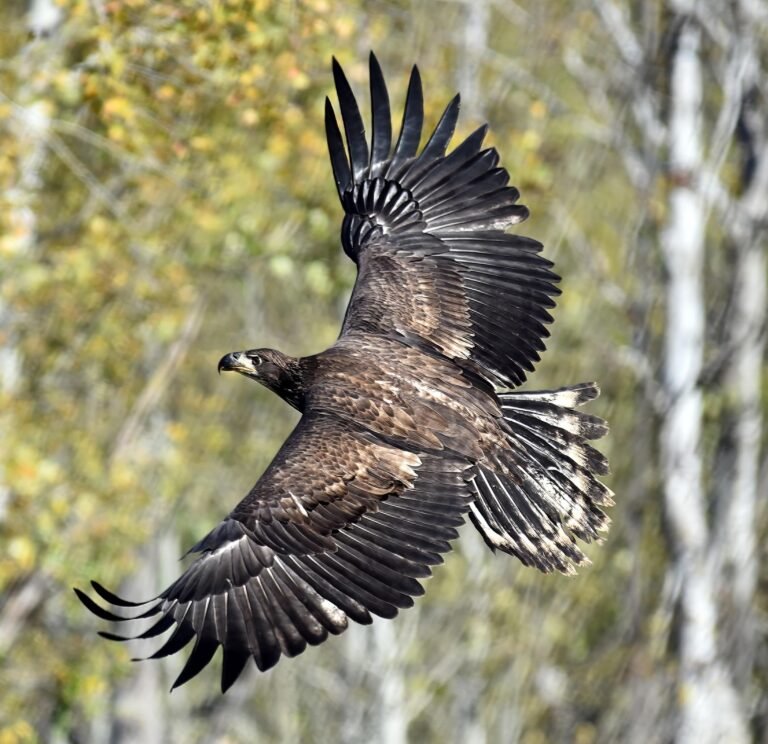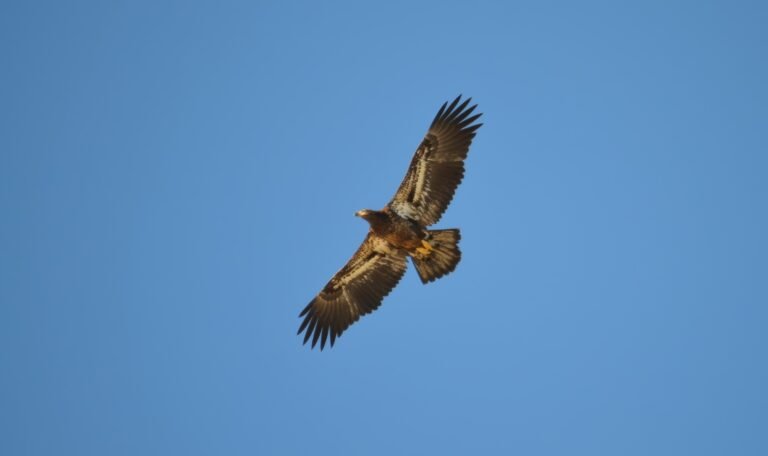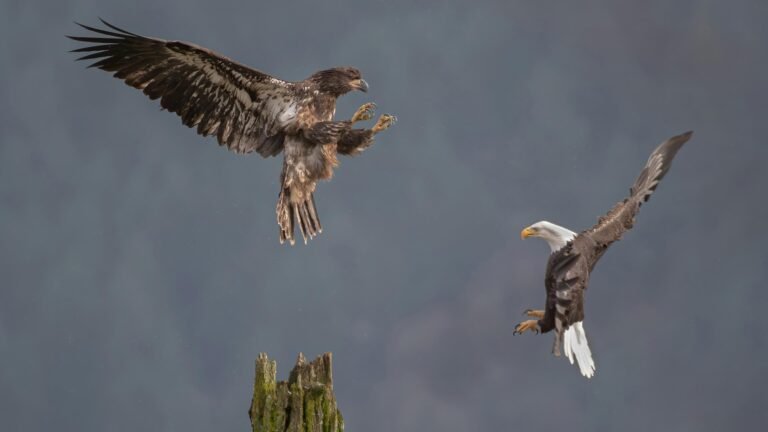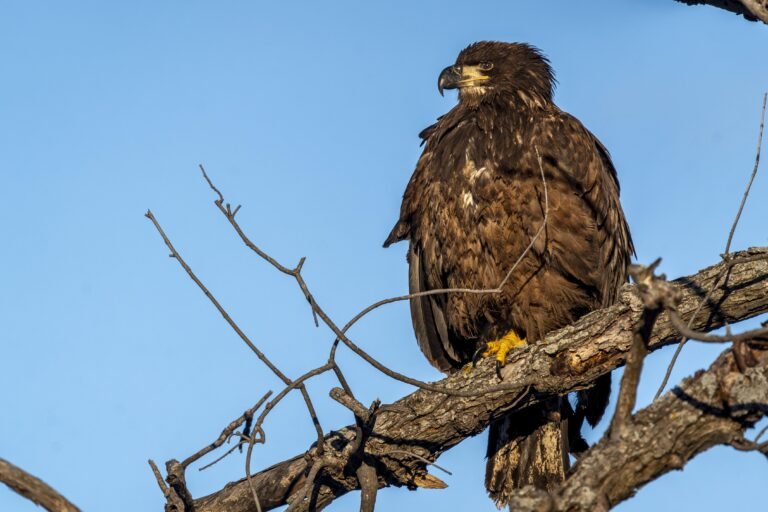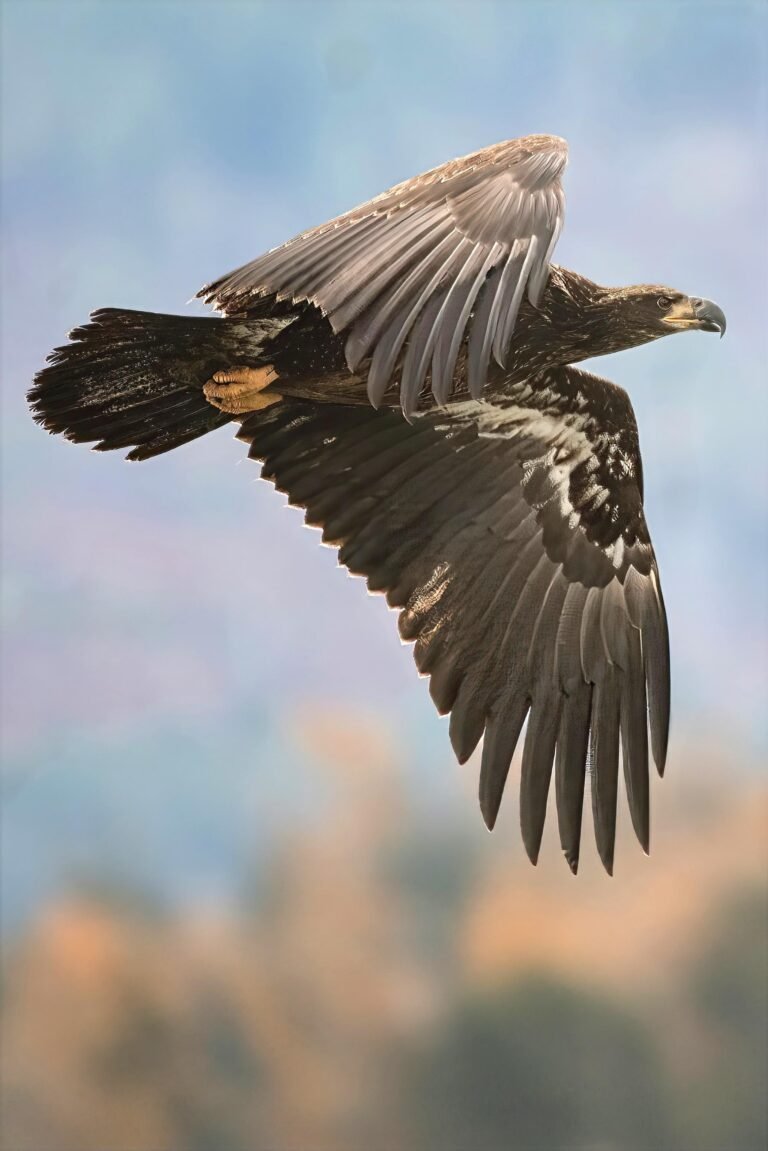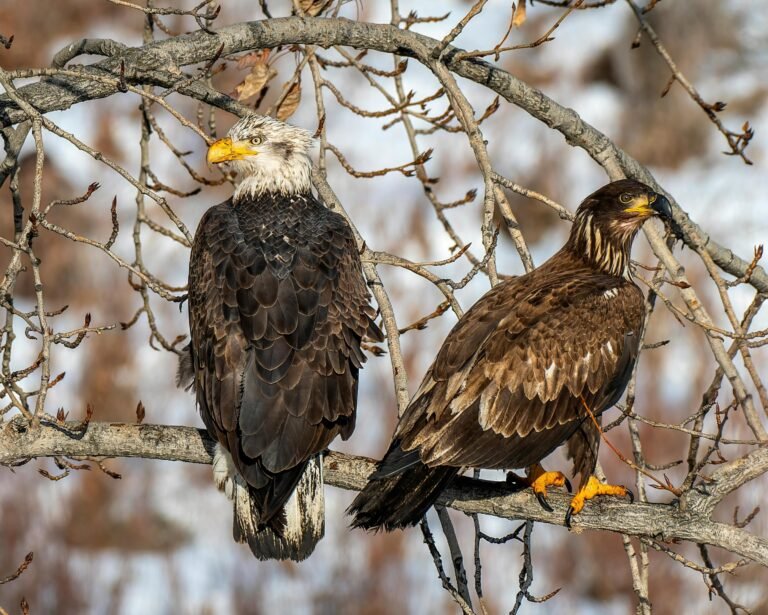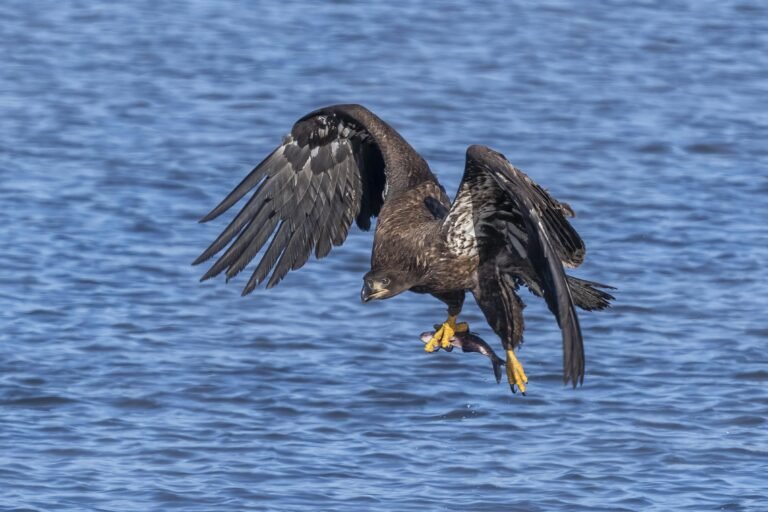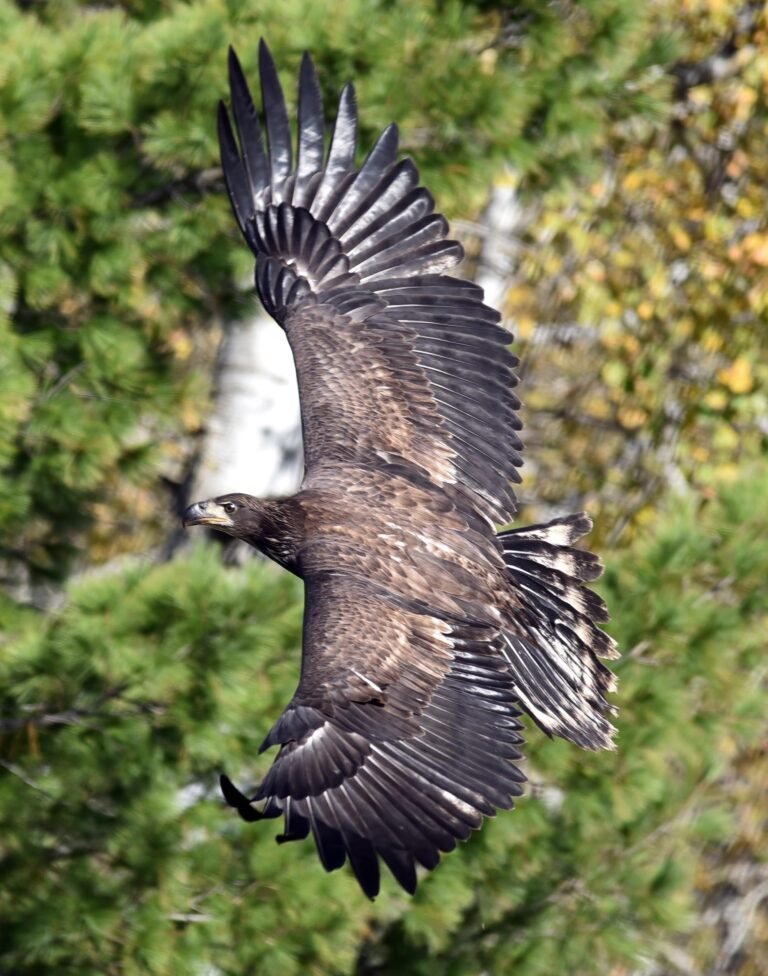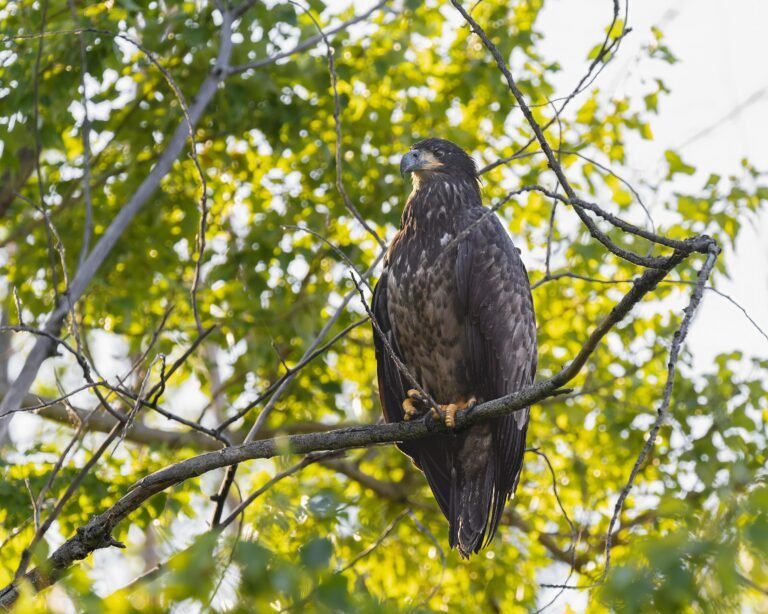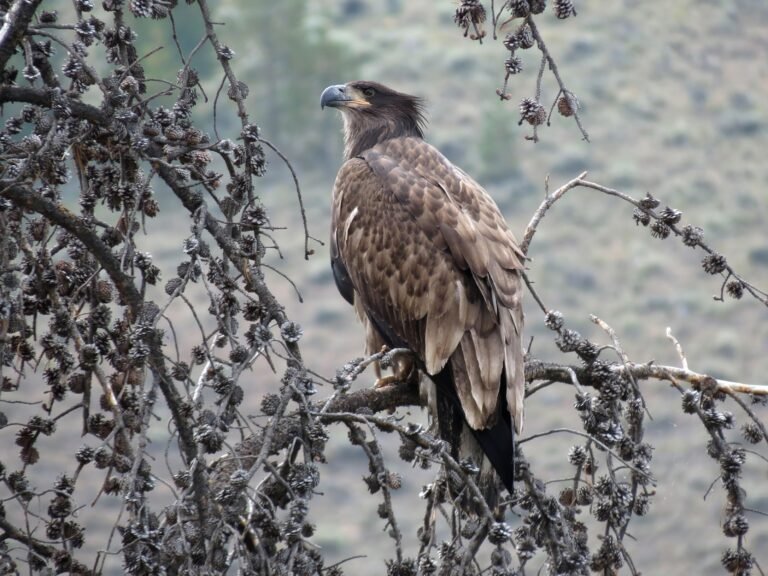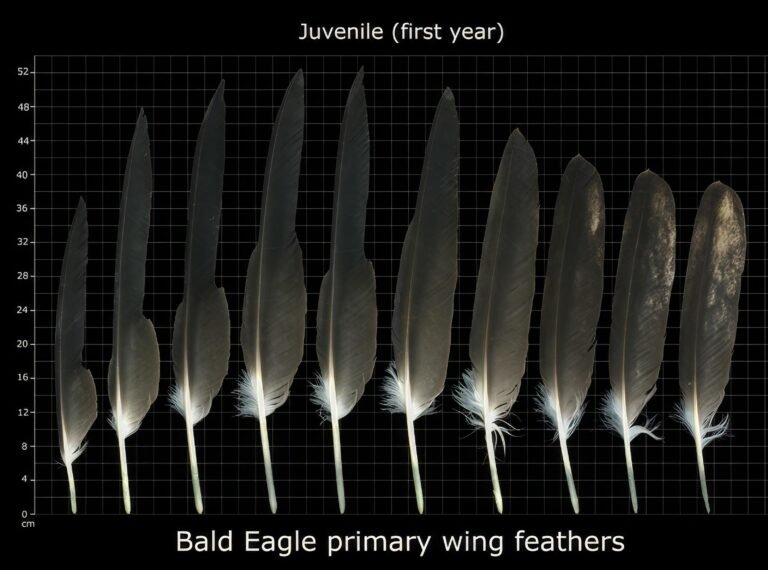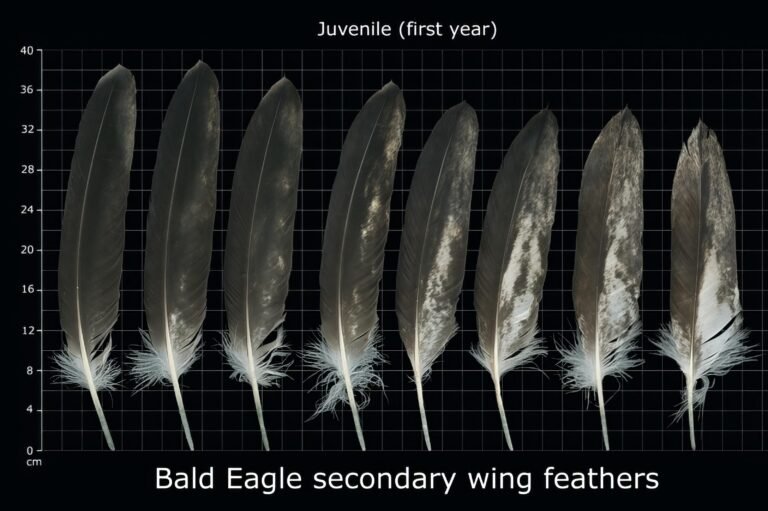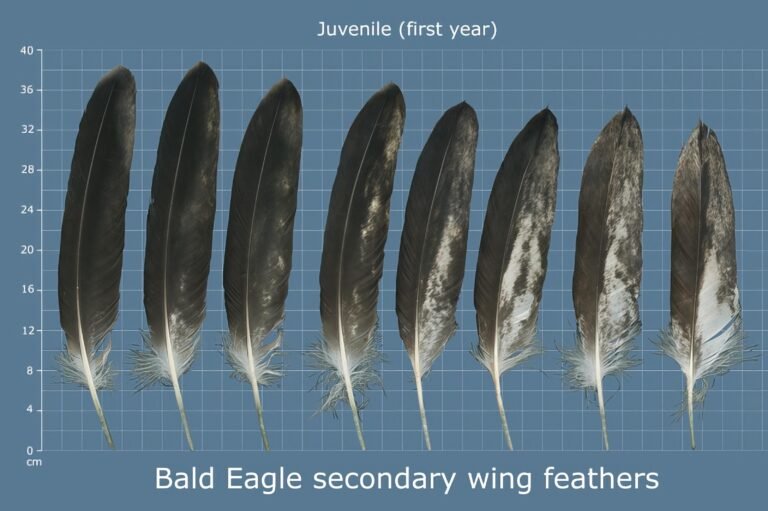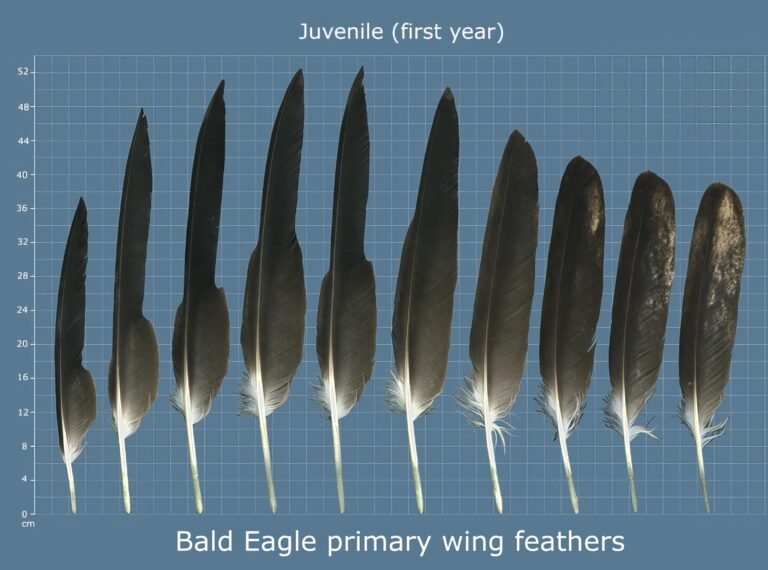
Image by EaglesExplored.com (Third Year Eagle Image by Robin Gwen Agarwal CC BY NC 2.0)
½ Year – Juvenal Plumage Gallery
Not Just Images – Insight
Welcome! See – Learn – Share. Our galleries document the variation of bald eagle plumage across the pre-definitive molt sequence (age), individuals, regions and seasons. In most cases, these variables aren’t known, so plumage and age classifications are approximate, based on plumage presentation and coloring of the beak, cere and iris. Sorting of the images is also approximate based upon Mark A. McCollough’s seminal 1989 paper, “Molting Sequence and Aging of Bald Eagles” which includes his descriptions and iconic sketches of known-age individuals. The variation in plumage tells a story of molt sequence over time. This page is dedicated to the Juvenal Plumage. In the plumage chronology of the Bald Eagle, the term “juvenal” refers to the distinctive feathering worn by juvenile eagles during their first year-plus of life. As defined by McCollough (1989), juvenal plumage is “completed at 11 to 14 weeks of age” and marks the foundational stage from which all subsequent molts evolve. Please refer to the table below the gallery for key classification tips. A full plumage description is available in McCollough’s cited paper. Some individuals shown in this gallery may exhibit active molt. They are placed in the gallery that best matches their overall presentation based on McCollough’s 1989 plumage descriptions. Viewer input is welcome.
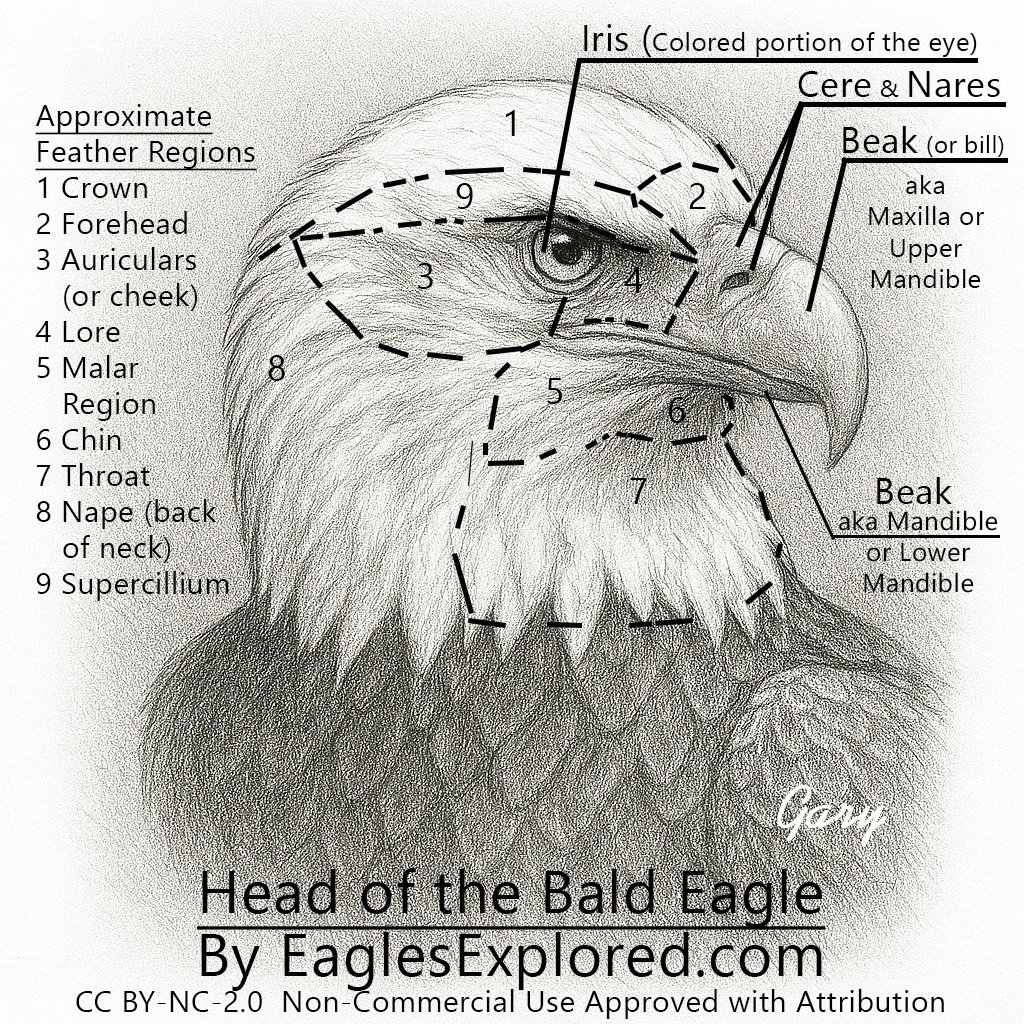
| 🦅 Juvenal Plumage Identification Summary (½ year) per Mark A. McCollough (1989). The following descriptions are based on McCollough’s observations of 135 Bald Eagles of known age. The observations were made in Maine and the Canadian Maritime Provinces. Plumage variation from these descriptions is possible, and rather likely based on factors such as season, region, molt status, diet, and more. This is a tool for approximation, not for confirmation. Some birds are undoubtedly in molt phase. An attempt has been made to place them in the gallery of the closest plumage classification. Please see note below gallery. | |
| Feature | Description (per McCollough 1989) |
| Crown | Uniform blackish-brown when fresh; bleached to buffy-brown by winter, contrasting with auriculars |
| Nape | Dark brown; basal portions of feathers whitish, appearing mottled in wind or when wet |
| Auriculars | Blackish-brown; darker than sun-bleached crown, creating strong contrast |
| Chin/Throat | Buffy-brown to smoke-gray; restricted to chin in 32 birds, extended down throat in 4 individuals |
| Belly | Generally buffy-brown, variably mottled with dark brown; contrasts with darker breast feathering |
| Tail | Distal third of rectrices sooty-black; inner vanes mottled pale gray and sooty-black, resembling juvenile Golden Eagle but with narrower terminal band. |
| Beak | Uniform blackish-gray; large and powerful-looking |
| Cere | Uniform blackish-gray |
| Iris | Sepia |

